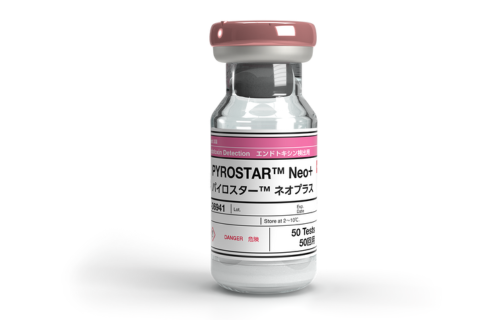Pyrogen Detection applications
A pyrogen is a substance that leads to an increase in body temperature in both humans and animals after entering the bloodstream system.
Pyrogenicity
Pyrogenicity can be observed in a range of scenarios, such as materials, production processes, or the administration of parenterals. Adjuvants in vaccines or synthetic lipopeptides are examples of products where pyrogenicity can also be inherent.
The detection of pyrogens is critical to maintain the quality of the product and to ensure the safety of injectable drugs, medical devices, biologicals, and other substances that will be introduced into the patient’s bloodstream, whether directly or indirectly.
Methods to detect Pyrogens
Rabbit Pyrogen Test (RPT): The RPT can detect all pyrogenic contamination, but it has some drawbacks. Results vary based on rabbit species and their living conditions. In addition, Lipidic formulations and proteins cannot be tested via intravenous injection.
Limulus Amoebocyte Lysate (LAL) Test: The LAL test relies on horseshoe crab blood clotting caused by gram-negative bacteria, with LPS (Lipopolysaccharide) as the key component for this reaction and the basis for the LAL test. The advantage of the LAL test is that it has a higher level of sensitivity compared to RPT. However, the limitation of LAL testing is that it can only detect LPS and not all pyrogens like RPT.
The Monocyte-Activation Test (MAT): This animal-free pyrogen tests detect pyrogenic contamination by using human whole blood or human blood cells. The test mimics the reaction of the human innate immune system by measuring the production of pro-inflammatory cytokines from human whole blood when in contact with pyrogens.
International regulatory bodies and Pyrogen testing
Regulatory organizations, such as the Food and Drug Administration (FDA), United States Pharmacopeia (USP), and European Pharmacopeia (EP), have implemented stringent standards to regulate the determination of the pyrogenic load of parenteral administered pharmaceutics, highlighting its crucial role in ensuring patient safety.
For over three decades, the FDA has approved the utilization of a Limulus Amoebocyte Lysate (LAL) test to detect endotoxins, replacing the need for the rabbit pyrogens test. The FDA's guidance states that an LAL test has the potential to be employed as a finished product test for endotoxins.
Applications of Pyrogen Testing
For medical devices: The manufacturing processes of medical devices must adhere to the strict controls specified by the Association for the Advancement of Medical Instrumentation (AAMI). Medical devices like wound dressing material or alginate microcapsules, have the potential to release additional chemicals or materials that could lead to pyrogenicity. Due to their direct interaction with blood and lymph, it is essential to verify that these devices are free from pyrogens. When it comes to detecting pyrogens, the LAL test is a commonly employed method, while the MAT can be a viable alternative to the RPT.
For Airborne Pyrogens: Bioaerosols or organic dusts, which are airborne particles of biological origin, tend to be more concentrated in occupational environments such as farms, recycling facilities, food processing and chemical industry. They can include microorganisms or related components/metabolites which can cause breathing problems and allergies. Pyrogen tests like LAL and MAT can help estimate the risk. The American Society for Testing and Materials employs a modified LAL assay to quantify airborne endotoxin levels in Metalworking Fluids (MWF) aerosols for assessing occupational exposure risks.
For Cellular Therapeutics: Contamination with microorganisms and pyrogens is a common concern for biological parenteral products like cellular therapeutics, vaccines, blood, and blood products, which can occur during the procurement and processing phases. If the sterility test is done, it only indicates the absence of viable bacteria. Contamination may not be detectable during testing, causing a false negative. Sterility tests don't ensure microbiological safety, necessitating reliable pyrogen testing methods. Before cellular therapeutics can be used clinically, it is mandatory to conduct the pyrogen test to ensure their safety.
Pyrogen testing is critical for product and device quality to ensure patient’s safety. To prevent potentially dangerous fever reactions caused by pyrogenic substances, the mandatory release tests are conducted.
1. Shanmugam, P.S.T., et al., Chapter 4 - Material-mediated pyrogenicity, in Biocompatibility Protocols for Medical Devices and Materials, P.S. Timiri Shanmugam, T. Sampath, and I. Jagadeeswaran, Editors. 2023, Academic Press. p. 55-66.
2. Fennrich, S., et al., More than 70 years of pyrogen detection: Current state and future perspectives. Altern Lab Anim, 2016. 44(3): p. 239-53.






